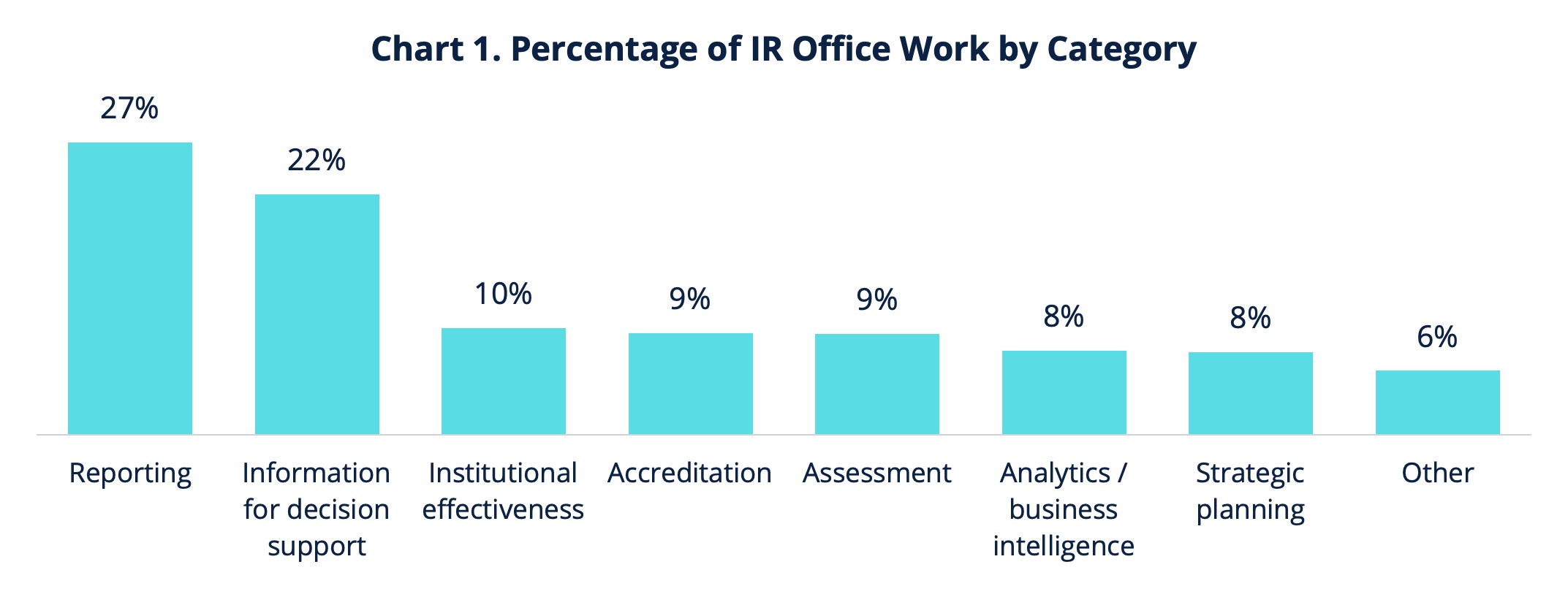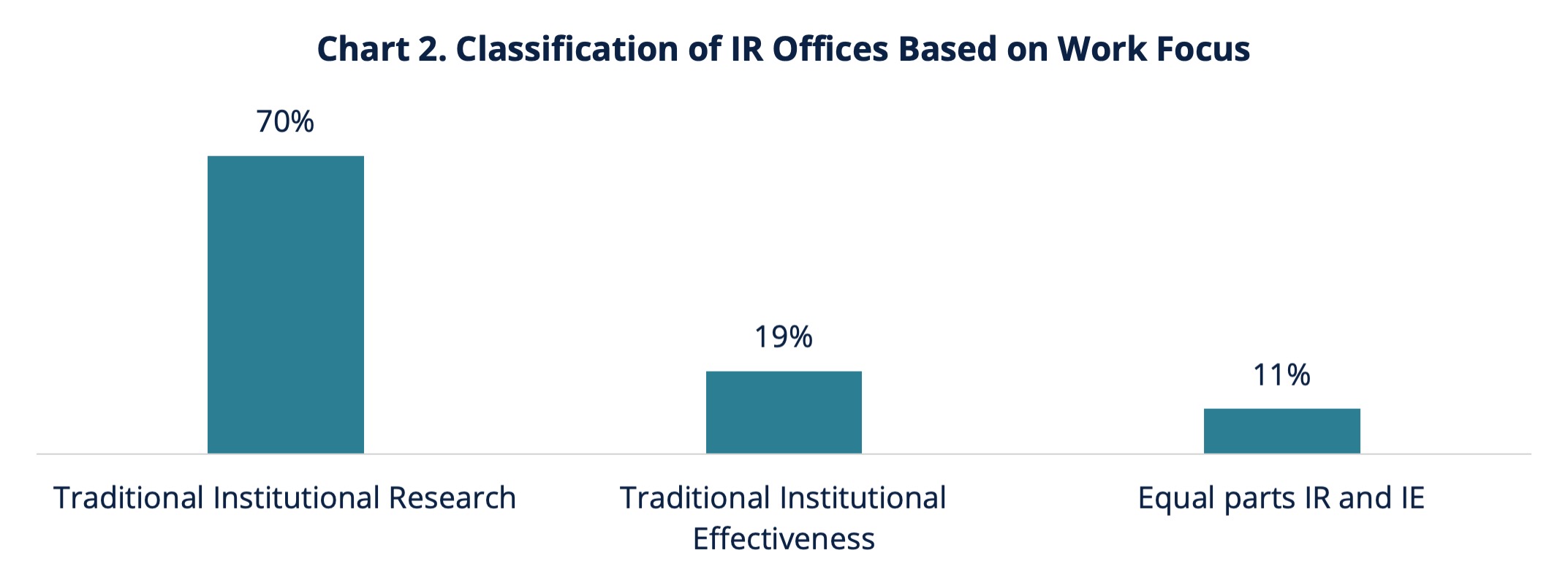IR Office Work Functions
This brief is one of a series of reports. Learn more at airweb.org/nationalsurvey.
Although the “why” of institutional research (IR) is clear—using data to inform decisions that improve higher education and student success—the “what” is more complex. The work of each IR office is tailored to meet the unique needs of its institution. To examine the IR office’s work functions, the 2018 AIR National Survey of IR Offices sought to identify what the “average” office focuses on.
Focus of the IR Office
We asked IR office leaders to estimate the percentage of effort spent on work across several categories. On average, half of their offices’ work is devoted to mandatory reporting and the production of information for decision support (Chart 1).

The remaining 50% of IR office work is about equally divided across institutional effectiveness (IE), accreditation, assessment, analytics, and strategic planning. Only 6% of office leaders report work beyond these categories.
A comparison across major sectors1 (i.e., public 4-year, public 2-year, and private not-for-profit 4-year institutions) reveal a similar pattern with a few slight differences (Table 1). For example, IR offices at public 2-year institutions spend less time on reporting and more time on IE compared to 4-year institutions. IR offices at public 4-year institutions spend more time in analytics/business intelligence (BI) than the other two sectors.
| Category | All Institutions (n = 543) | Public 4-year (n = 164) | Public 2-year (n = 125) | Private NFP 4-year (n = 254) |
|---|---|---|---|---|
| Reporting | 27% | 28% | 24% | 28% |
| Information for decision support | 22% | 25% | 22% | 21% |
| Institutional effectiveness | 10% | 9% | 13% | 9% |
| Accreditation | 9% | 8% | 10% | 10% |
| Assessment | 9% | 8% | 10% | 10% |
| Analytics/business intelligence | 8% | 10% | 7% | 7% |
| Strategic planning | 8% | 7% | 10% | 7% |
| Other | 7% | 5% | 4% | 8% |
Individual IR Office Classification
To get a clearer picture of the individual IR office, we classified work functions into two main categories: traditional IR (i.e., reporting, decision support, and analytics/BI) and traditional IE (i.e., IE, assessment, accreditation, and planning). Then, we classified each IR office as predominantly IR-focused, IE-focused, or an equal mix based on the percentage of effort spent on the various work functions.
Survey data reveal that 70% of offices are primarily focused on traditional IR, 19% are primarily focused on traditional IE, and 11% spend equal amounts of time on both IR and IE (Chart2).

There are differences in IR office classifications by sector. A higher percentage of IR offices at public 4-year institutions focus primarily on traditional IR compared to the other sectors (Table 2).
| Classification | All Institutions | Public 4-year | Public 2-year | Private NFP 4-year |
|---|---|---|---|---|
| Traditional Institutional Research | 70% | 80% | 62% | 67% |
| Traditional Institutional Effectiveness | 19% | 10% | 28% | 22% |
| Equal parts IR and IE | 11% | 10% | 10% | 11% |
Methodology
The 2018 AIR National Survey of IR Offices attempted to survey IR office leaders at more than 3,000 postsecondary degree-granting institutions. Institutions of all sectors, types of control, and sizes were included in the sample. In total, responses represented 1,167 institutions, and 566 of those institutions completed the survey in full. To ensure comparable results, incomplete responses are excluded from this report. In addition, responses from for-profit institutions, administrative units, international institutions, private not-for-profit 2-year institutions, and institutions in U.S. territories are excluded due to low response rates.
This Report
The findings presented in this report are based on 543 responses that represent U.S. postsecondary, degree-granting institutions at public 4-year, public 2-year, or private not-for-profit 4-year institutions.
1. See methodology section at end of this report for more information.
Related Content
2018 AIR National Survey of IR Offices: Topic Briefs
